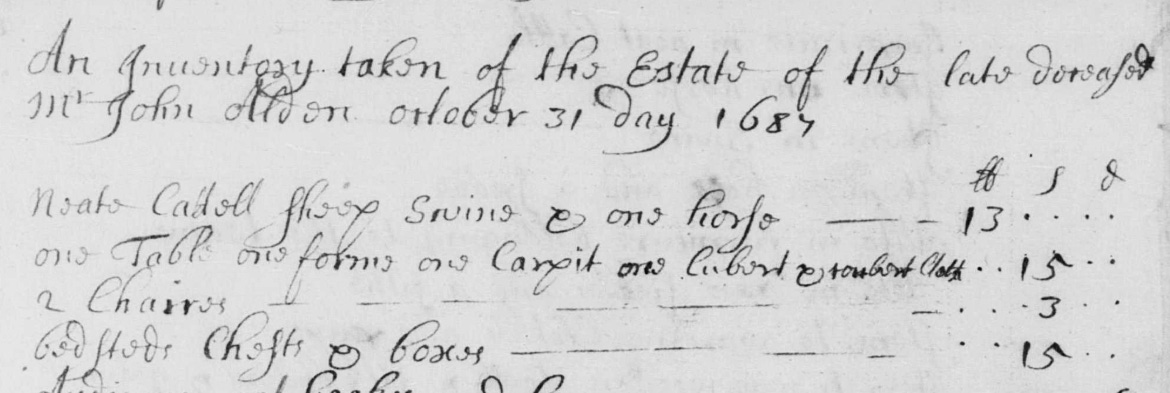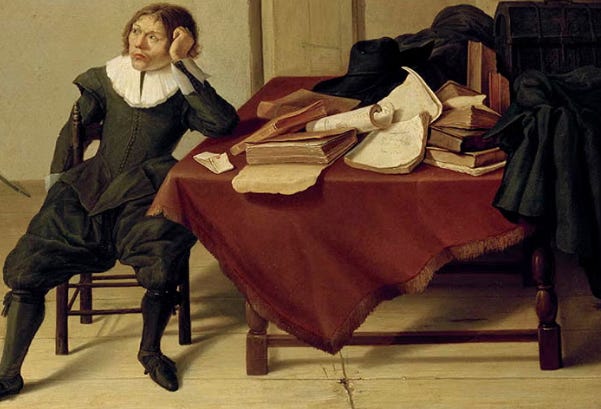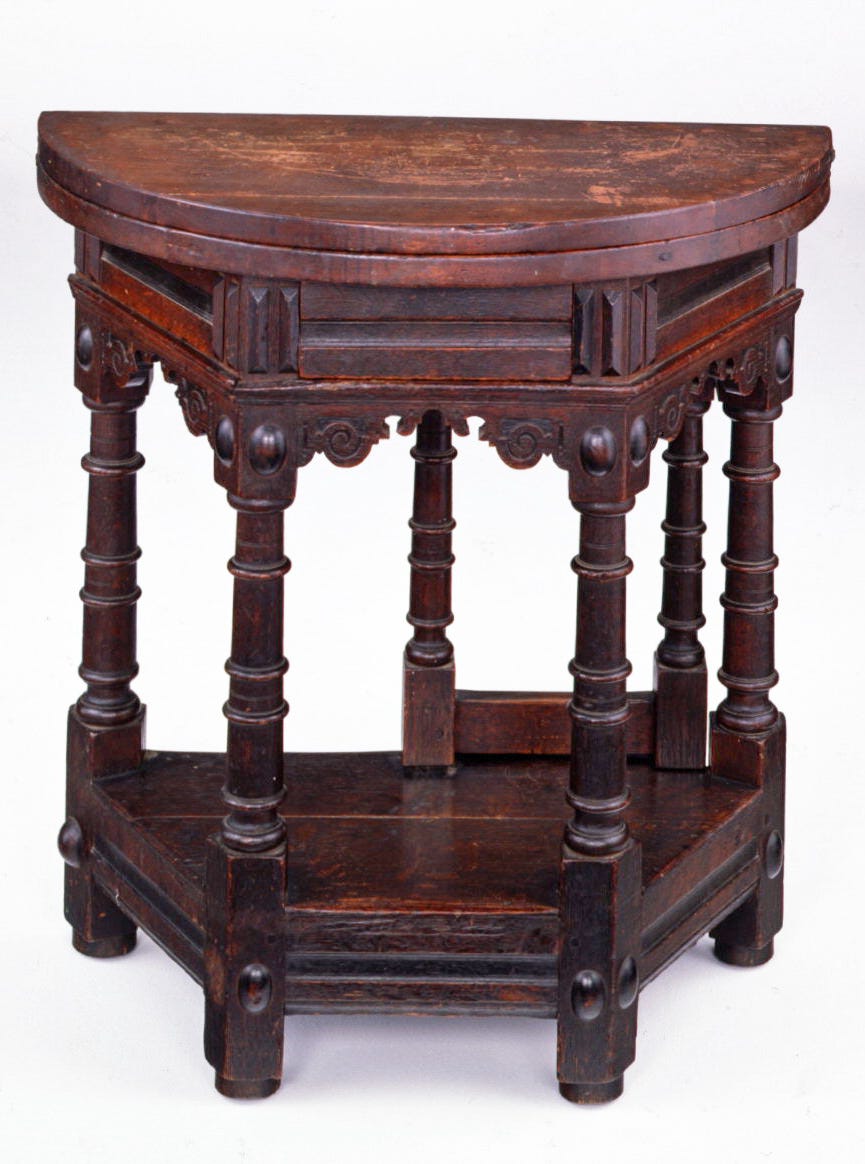One more look at tables before I move onto other subjects. Probate inventories are a vital source for evidence of what was in a home at a given period - if you can decipher what the appraisers were looking at. And if they give you any detail in the form of adjectives. Quite often all you get is “table” usually along with whatever stools, benches/forms might be associated with it.
Here’s an example I randomly picked from a set of originals online - and it turns out to be one of the famous Mayflower passengers, John Alden. No matter, I chose it because it tells us very little. I’ll transcribe it for you -
An inventory of the Estate of the late deceased Mr John Alden October 31 day 1687
Neate cattell sheep swine & one horse £13
One Table one forme one Carpitt one Cubboard & cupboard Cloth 15 s
2 Chaires 3 s
Bedsteds Chests & boxes 15 s
[there’s way more than that, but I just wanted to focus on the table.]
No telling what sort of table that is - especially because it’s lumped in with all that other stuff, so we can’t even assign it a specific value that might be a clue. But clustered right there is the table, a “form” - a long bench - and after that, 2 chairs. The cupboard & its cupboard cloth would be perfect complements to the table and seating furniture. But what about the “carpitt”? It’s not under the table as you might think - it’s on top of it. Period use in English households (& Dutch, we’ll see) was to lay a heavy carpet on the table, then often a linen tablecloth on top of that.
The only reason I know the Dutch did it too is because we always studied Dutch “Golden Age” artwork for clues about 17th century households, etc. In the painting above (plucked off the web) a heavily patterned carpet on the table. You can barely see the table legs poking out from below. One more - a plain carpet on a framed, or joined, table.
In those inventories we get small, large (sometimes “great” instead of large), round, square - once in a while, “joined” or “framed.” One of the English inventories I made note of has a “round square table”. Read enough of this stuff & your head will hurt.
I found some English inventories that included “Joyned table with leaves”, another version is a “leaved frame table.” There’s a few table forms that include leaves - one I want to look at are often called “folding tables” now. A trapezoidal frame, often or usually with a drawer in the front. A half-round table when it’s closed - open it and you have a round table. The leaf is supported by a gate that swings out from the back rails.
This very stylish example is perhaps from Boston - made of oak, walnut, maple, cedrela and pine. Now at Chipstone Foundation - their photo. It’s framed like the upper case of a trapezoidal cupboard - the stiles are planed to 5-sided irregular shapes to accommodate the joinery. The rails’ tenons have 90° shoulders. So the stiles’ shapes create the trapezoidal shape of the table’s frame. Here’s a diagram of the table frame -
Keep reading with a 7-day free trial
Subscribe to Follansbee's Substack to keep reading this post and get 7 days of free access to the full post archives.








